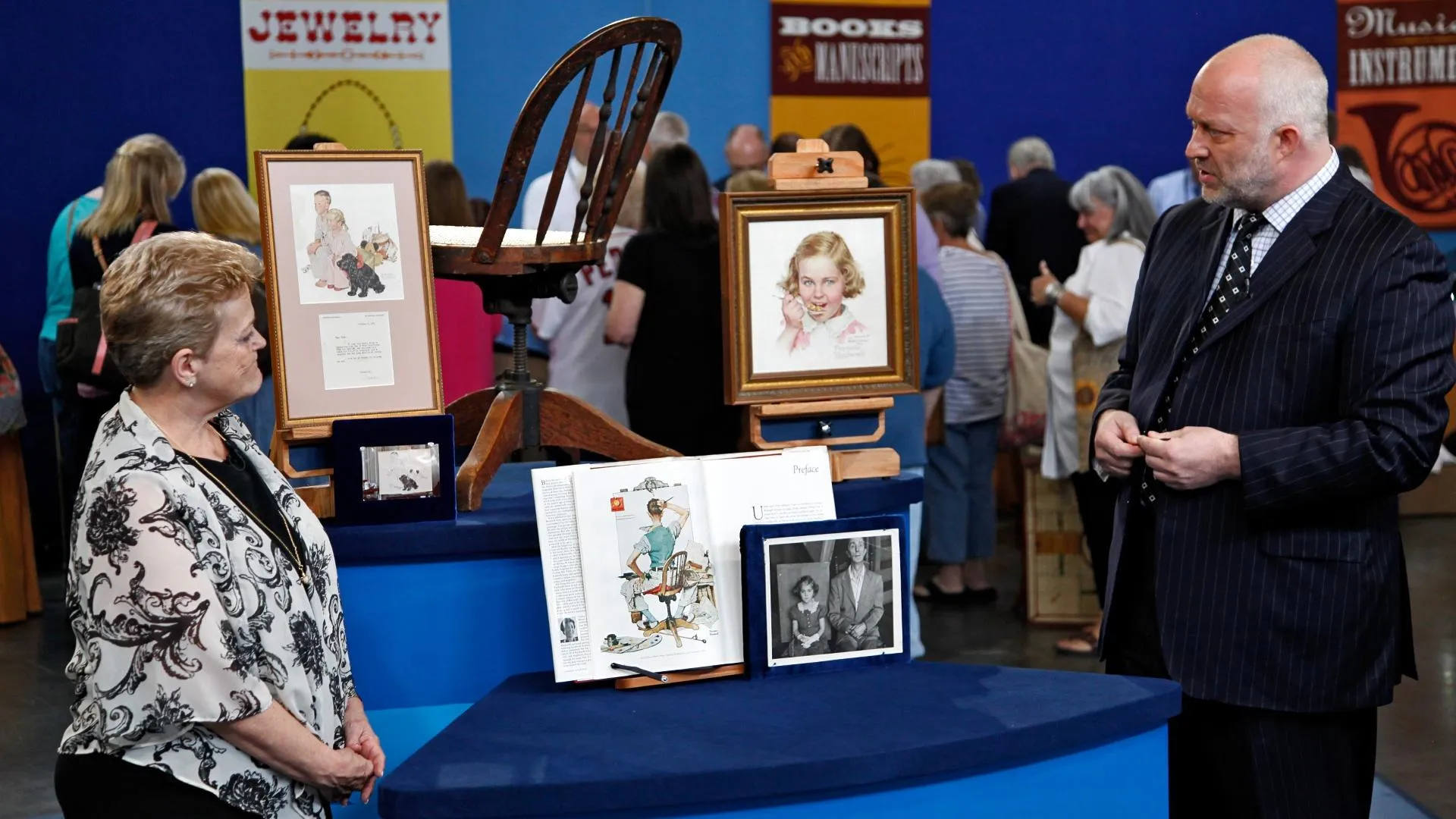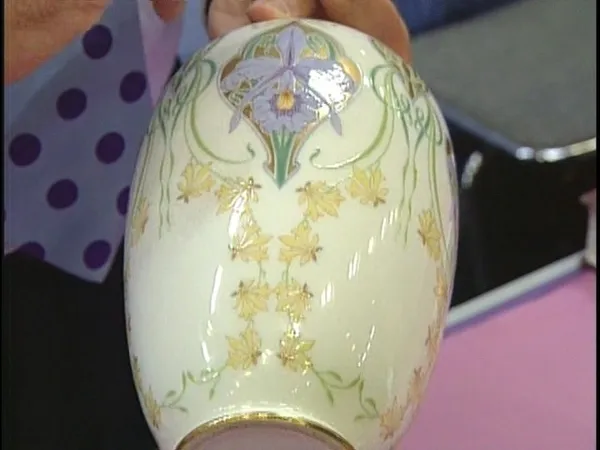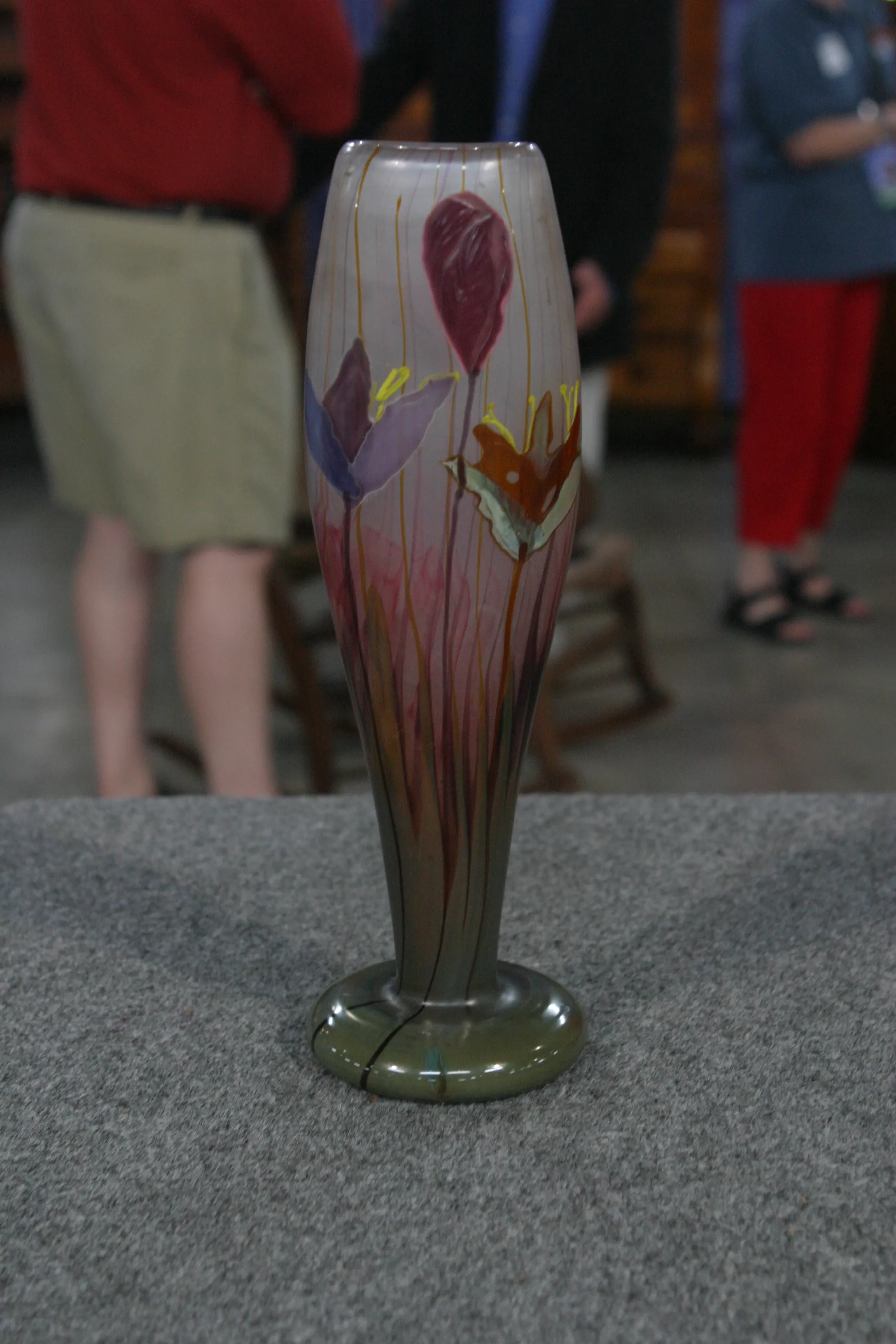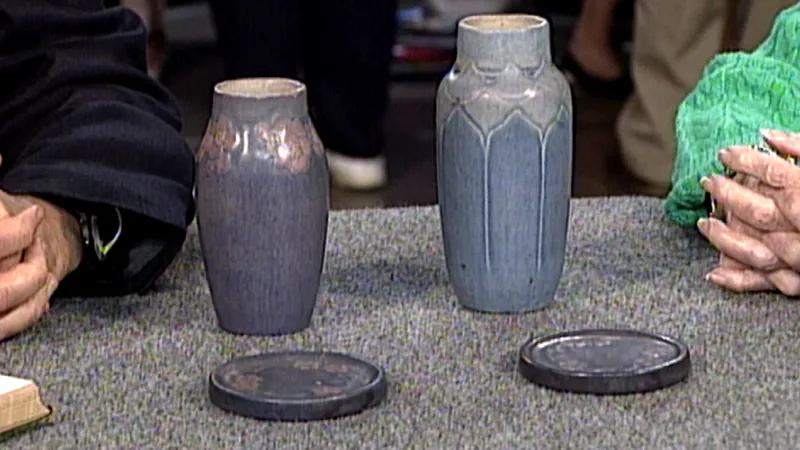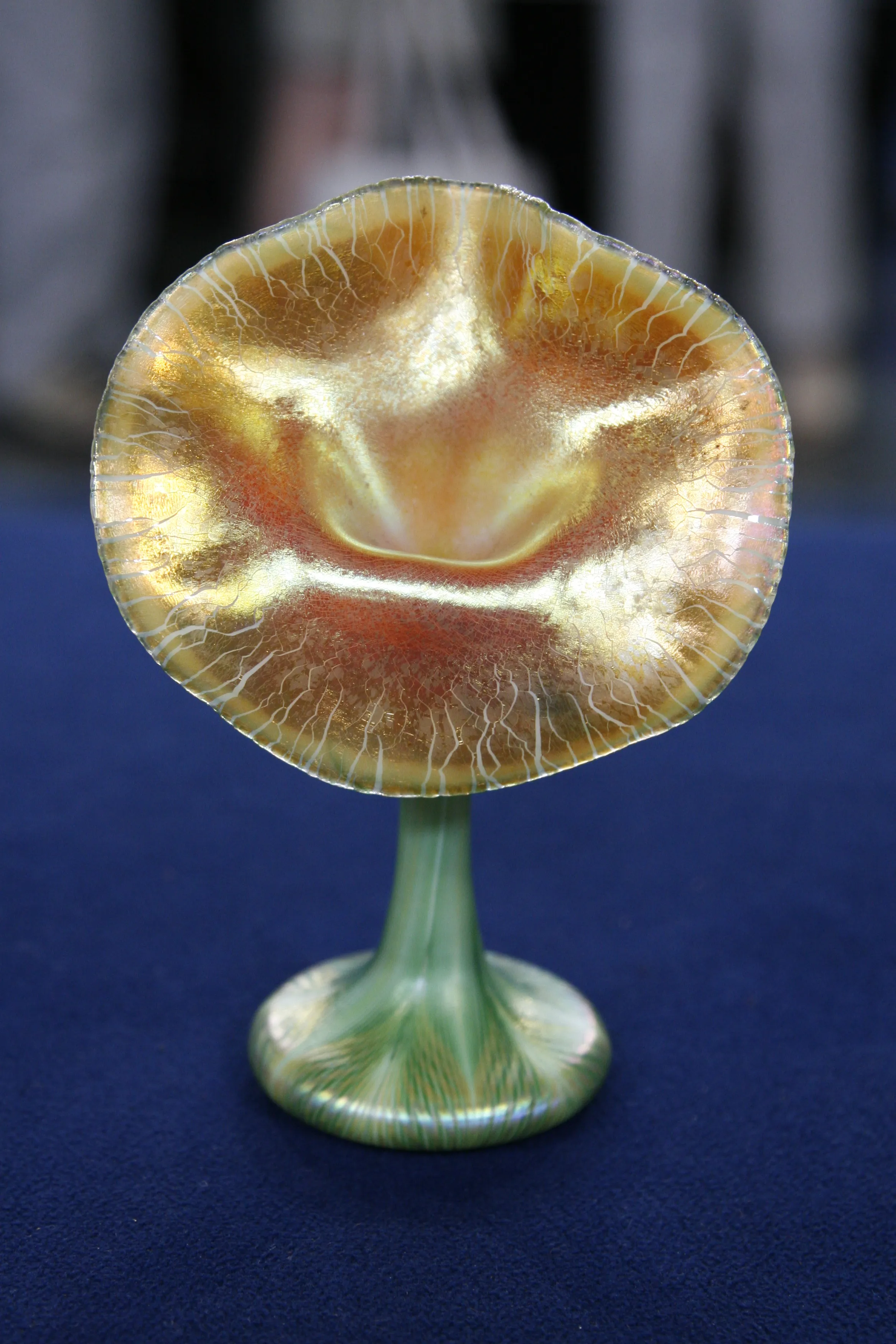GUEST: I think it's Art Nouveau by the Quezal Company. They were in the same time as Tiffany, but other than that I don't really know anything about it.
APPRAISER: Okay, and how did you get it?
GUEST: It belonged to the artist Florence E. Ware, who was a very good friend of my mother, and she gave it to my mother, and then my mother gave it to me. I've had it since the mid-'70s.
APPRAISER: Well, it is a "Quiz-elle" vase.
GUEST: "Quiz-elle."
APPRAISER: Quezal, but it's interesting you said "Ketzal" because Quezal was named for a Central American bird called the quetzal bird. And the reason they named it after the quetzal bird is because the quetzal bird had beautiful, colorful plumage and sometimes iridescent in nature. And as you can see, there's a lot of iridescence on the Quezal glass.
GUEST: Yes.
APPRAISER: It's an interesting connection between Quezal and Tiffany. Tiffany Glass and Decorating Company was up and running in the 1890s. And there were two people who worked there who actually left to form Quezal. The first person who left was Martin Bach Sr., and he left in 1899. Now, Martin Bach Sr. did not blow glass. He was a chemist. So he knew all the secret formulas and all of the different colors and chemicals used to create something that looked like this. But he didn't have a gaffer. And in 1901, one of the chief gaffers at Tiffany, Thomas Johnson, left. So they formed the company together in 1901 and began to make glass. The company was in operation from 1901 till 1924. This is a little more interesting than the more recognizable Quezal pieces in that first of all, it's a true vase form, but it also has this lovely triple-hooked decoration and the single-hooked feather decoration on the bottom part. The color is nice. It's blue and it's purple instead of the standard, what you normally see, which would be a gold and a cream and a green. So it's a little refreshing, and if you didn't know what you were looking at, you might think it was a Tiffany. What's very nice about it is I want to show you the signature. This is a finely engraved signature; it says "Quezal." The "K" prefix indicates that this was made circa 1910. And the real hardcore Quezal collectors believe, and it's not conclusive, but they think that when Quezal... when they produced pieces that they were very proud of, they put this extra little scroll in between the Quezal and the K number. I would say in a retail setting, I would place the value between $2,500 and $3,500.
GUEST: Really?
APPRAISER: Now, there is one little catch here. What I noticed is there is some scratching on the surface. And the Quezal collectors are very fussy about their condition. It's not a crack, it's not a chip, but nevertheless it does disturb the decoration. If that weren't there, I would have been more inclined to say $3,000 to $5,000.
GUEST: I see. Okay. Well, thank you.
APPRAISER: Thank you for bringing it.
GUEST: Thank you very much.

